This little creature is my favorite moth. It’s common name is actually the hummingbird clearwing moth (Hemaris thysbe). When I first saw one, I actually thought that I was seeing a hummingbird flitting about from flowers. But then I noticed the antenna.
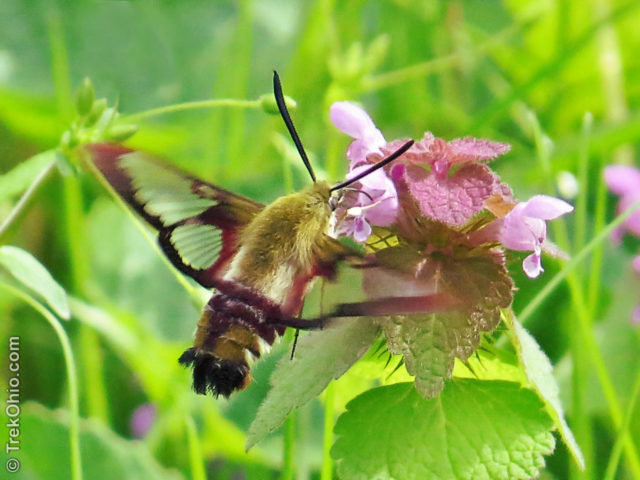
In the above photo, you can see right through the moth’s wings, hence the name “clearwing.” However when it first emerged from its cocoon, the wings were a solid, dark red similar in color to the border of the wings seen above. The coloring in the wings of all moths and butterflies is due to the scales that overlay the wing membranes. But the hummingbird moth can beat its wings at a rate of up to 85 times per second. This incredible number of wing beats per second causes the scales on the wing to flake off. In comparison, a ruby-throated hummingbird beats its wings 60 to 80 beats per second during normal flight (and thankfully gets to keep the feathers on its wings!).
While a ruby-throated hummingbird inserts its long bill into flowers and laps up nectar with its tongue, insects are built differently. The hummingbird moth has a tongue that it keeps tightly coiled and held under its chin. In insects this tongue is called a “proboscis”. Unlike a hummingbird tongue, the proboscis is a hollow tube through which the moth sucks fluids much like we suck fluid through a straw. There is actually a little sac in the moth’s head to control the sucking action.
In the photo below you can see the hummingbird moth in the process of uncoiling its tongue as it approaches a flower to drink.
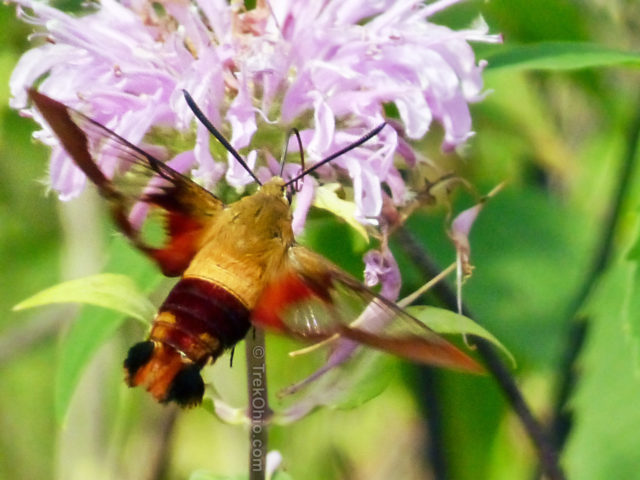
Just like a hummingbird, the hummingbird moth continues flying while maintaining a stationary position. One advantage that the hummingbird moth has over an actual hummingbird is that it can use its front two feet to stabilize its position while hovering. Typically it braces these feet against the flower petals as can be seen below.
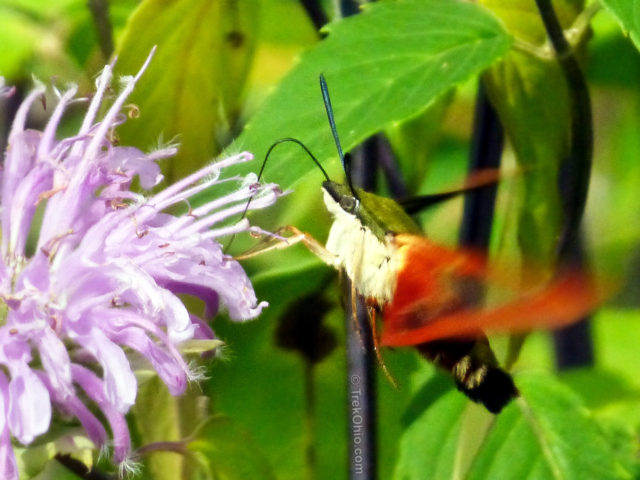
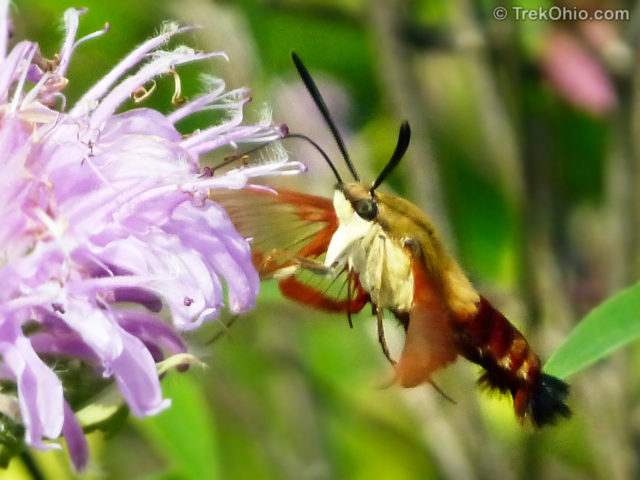
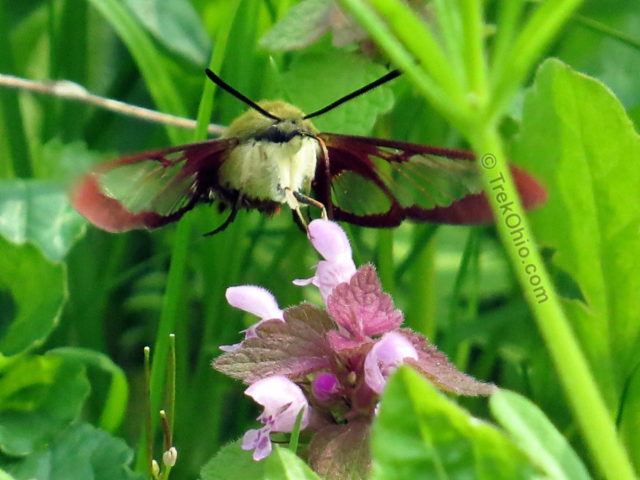
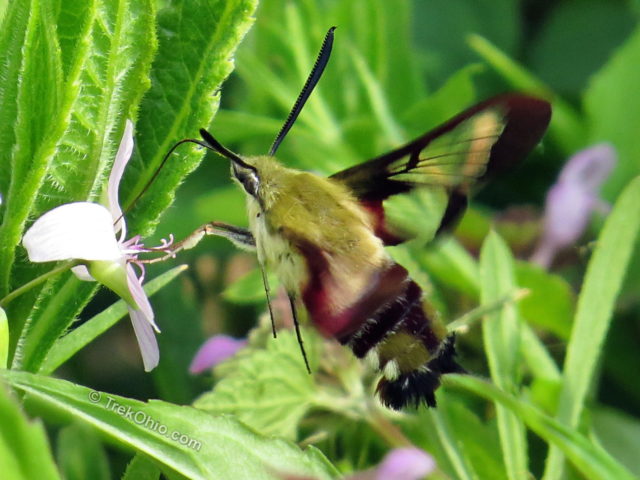
In most of the photos on this page, the moth is pictured drinking from a flower known as bee balm (Monarda fistulosa). I photographed these moths in July in a flower patch near the visitor’s center for Old Man’s Cave. There were plenty of them there. When you visit Old Man’s Cave in mid-summer, keep an eye out for them.
The topmost and bottom-most photos of this article show a hummingbird moth drinking nectar from a small flower (or weed) known as purple dead nettle. These two photos were taken May 3rd of last year in the Boch Hollow State Nature Preserve. May is just around the corner, so you could soon have an opportunity to see one of these moths. In general hummingbird clearwing moths can be seen flying about all summer. Unlike a lot of moths they are active during the day. They are usually most active during the hottest part of the day.
In the photo below the tip of the tail is fan-shaped almost like a bird’s tail.
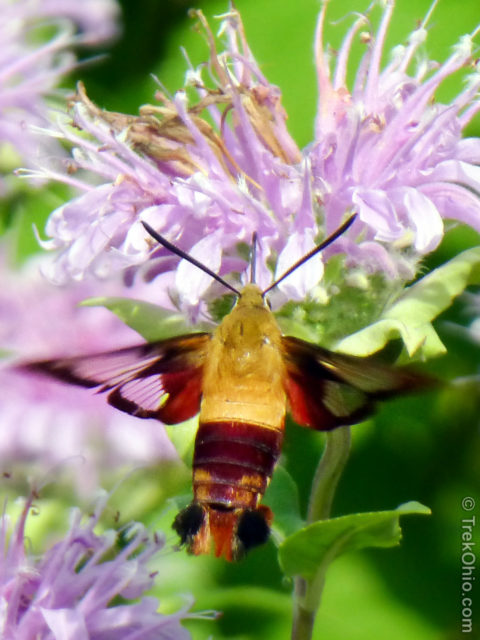
In these photos you can see the wings (though still blurry) because they were photographed at a very high shutter speed, with the shutter snapping open for 1/1000 to 1/1250 of a second. However if you are watching them with your eye, the wings move so fast it is hard to make them out. In most of the photos the wings even seem shaped like a bird’s wings, rather than the shape that most moth wings have. However in the photo below you can make out the forewing and the hindwing that you would expect to see in an insect.
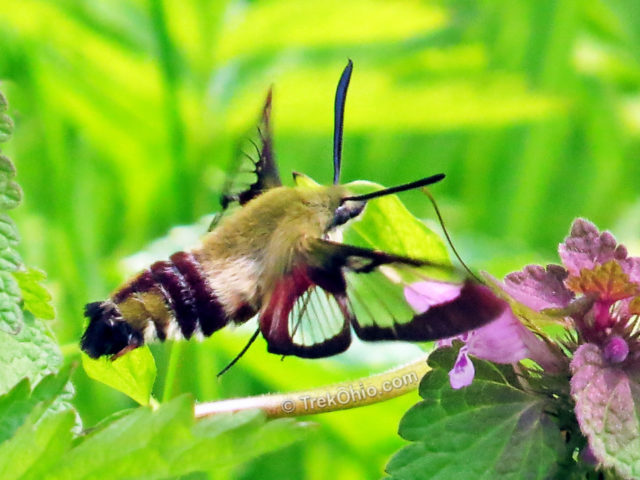
For some reason I usually forget that I can switch over to movie mode while I’m taking photographs, so I don’t have any video of the moths that I have seen. However I really like the video that I embedded below. It was published by inurufu; here is a direct link to it at YouTube. Among other things, you can hear the humming sound that the moth makes while it is flying about. It sounds a lot like you a hummingbird as it zips by.
Additional information
- Wikipedia: Hemaris thysbe — This is the scientific name for the Hummingbird clearwing moth.
- Wikipedia: Proboscis — This is the tube-like, coiled tongue found in butterflies and moths.
- U.S. Forest Service: Hummingbird Moth (Hemaris sp.)
- Hedgerow Rose: What is a hummingbird moth?
- Mothapalooza! — This is an annual meeting of moth enthusiasts. In addition getting to learn more about moths, there are opportunities to join in on organized hikes during the day. This year the event is scheduled for August 5-7th, 2016 at Shawnee State Park.
- Wikipedia: Ruby-throated hummingbird
More on Moths and Butterflies
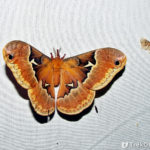
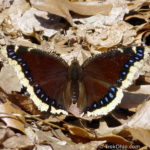
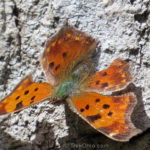
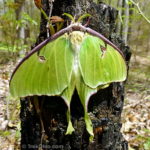
I have a video I just took tonight.
Hi Deb,
Excellent article and wonderful photographs. Recently found your website and have been enjoying the articles especially the Luna moth. So much great info on the life cycle of this fascinating creature.
Just one thing. In this article, you mention that the clearwing moth beats its wings faster than a hummingbird at up to 85 beats per minute.
When I read it, I recalled watching a National Geographic documentary on hummingbirds.
I recall footage showing the two in flight next to each other and pointing out the differences including size and wingspeed. As I recall, the clearwing had a wingspeed of 30-35 beats per min. which is slower than a hummingbird. I found a website which confirmed my recollection.
https://roadsendnaturalist.com/tag/hummingbird-clearwing/
The above source is not a university or accredited organization, so you may wish to look into the matter further. Unfortunately, many sources such as the Peterson fieldguide say “beats its wings rapidly” and leave it at that.
Best wishes,
Sophie
Love these guys! Great photos 🙂
Thank you, Karen. 🙂